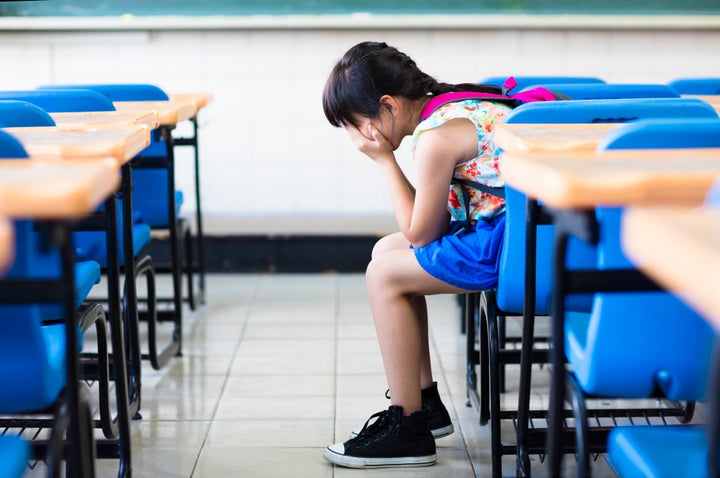
Senior Savenaca Gasaiwai is only one of around 30 Pacific Islander undergraduates out of over 24,000 at the University of California, Irvine.
That's why he was surprised last year when a senior administrator at the school told him that that his population is actually not seen as "having any kind of problem or special needs in higher education."
The admissions director wasn't referring to Pacific Islander students specifically, but to a broad category often used in data collection called Asian American and Pacific Islander, or AAPI. Altogether, this group tends to be some of the highest achieving students in the country. But when you further parse these statistics by specific student subgroups, the data tells a different story.
Data that shows Asian American and Pacific Islander students excelling in higher education is "only accounting for a large proportion of the AAPI community who are doing well," said Gasaiwai, who is Fijian. "It does not paint an accurate picture for Native Hawaiian and Pacific Islanders as well as other Asian American sub populations like Cambodian and South East Asian communities."
Until recently, relatively little data had been collected on the educational attainment of students who come from community's like Gasaiwai. However, the Department of Education announced a program this month that could help fix this problem. As part of a new $1 million grant program called the Asian American and Pacific Islander Data Disaggregation Initiative, The Department of Education is encouraging states to obtain and analyze disaggregated data on AAPI subgroups. Several community groups that advocate for AAPI populations are celebrating the move.
"There is an urgent need to address the daily challenges that AAPI’s face, which is also as diverse as their communities ... AAPIs trace their heritage to more than 320 countries and racial groups and speak more than 100 languages," said Secretary of Education John King in a video announcing the initiative. "We also know that many AAPIs face the model minority myth -- the notion that virtually all AAPI have access to a quality education and are affluent, which has prevented AAPI communities from fully benefitting from federal programs and resources that can support vulnerable and underserved people."
Much of the education data currently collected on AAPI students -- like graduation rates and standardized test scores -- does not delve into the achievement of specific subgroups like Cambodians, Vietnamese or Laotian Americans. So while some groups, like Japanese Americans, or those of Korean and Indian origin, tend to have high levels of educational achievement and low rates of poverty -- others are not attaining such results. But because the AAPI banner masks these differences, struggling populations might not be getting the help they need.
The issue is one that some activist groups have been pressing for years.
“When the data is concealing what needs are in the community, then AAPI’s aren’t getting access to those services.”
- University of California, Los Angeles education professor Robert Teranishi
"What's been happening is aggregated data that lumps all Asians into one group has created a misleading statistical portrait for whats happening to subgroups in the population," said Robert Teranishi, a professor of education at the University of California, Los Angeles. But disaggregated data reveals that "the prevailing assumptions about AAPIs as model minorities is inaccurate and misleading and damaging for the population."
The lack of data on AAPI subgroups has perhaps prevented some populations from getting the resources they need. Yet Asian American and Pacific Islanders are the nation's fastest growing racial group. Immigrant and refugee families are spurring much of this growth.
"A lot of the decisions about where resources are going to be used, where we should emphasize services and supports for students -- a lot of that is determined by what we see in the data," said Teranishi. "When the data is concealing what needs are in the community, then AAPI's aren’t getting access to those services."
Indeed, the pervasive myths around the model minority stereotype may also prevent Asian American and Pacific Islanders from receiving philanthropic gifts.
Perceptions of "AAPIs as uniformly successful are really prevalent across state local agencies, prevalent in philanthropy where funders also hold this perception that our communities are doing well land don’t need resources," said Daniel Ichinose, a project director for Asian Americans Advancing Justice in Los Angeles.
A recent report from the Asian Americans and Pacific Islanders in Philanthropy highlights this issue.
"Underinvestment in AANHPI [Asian American Native Hawaiian Pacific Islander] communities has remained persistent, with foundation investments hovering around 0.3 percent for the past 25 years and ongoing barriers to accessing government grants," the report states.
Gasaiwai, on the other hand, feels like he has had to face other harmful stereotypes about Pacific Islander students. He hopes more data could help change this.
"I had people asking me: 'how did you get here, did you come in through a sports scholarship?' That’s basically what they know about Pacific Islanders --they’re big people who play sports, who peddle their way through academia to fill up numbers in a football team," said Gasaiwai. "That’s hardly what it is for me."
He continued, "When we’re lumped together as one monolithic whole, you render invisible the experiences and struggles that exist."
______
Rebecca Klein covers the challenges faced in school discipline, school segregation and the achievement gap in K-12 education. In particular, she is drilling down into the programs and innovations that are trying to solve these problems. Tips? Email Rebecca.Klein@huffingtonpost.com.
______
Related Stories:

